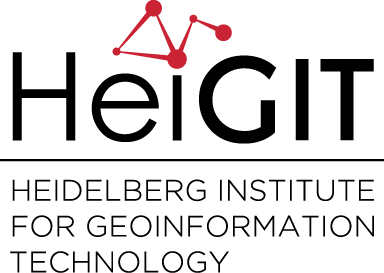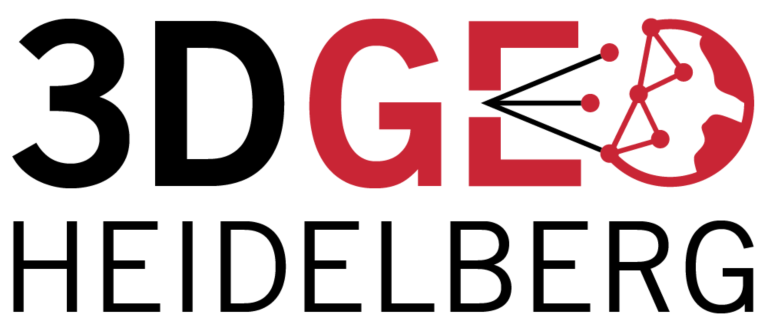Category: Lidar Group
-
MAN & MACHINE portrayed in the Forschungsmagazin “Ruperto Carola”
Can the human brain be described as a kind of machine – and, by extension, human memory as a time machine? What do software and the human mind have in common, and what are the ethical dilemmas involved in the use of artificial intelligence (AI)? Neurobiologist Hannah Monyer and geoinformatics expert Bernhard Höfle present talking…
-
Disaggregating surface change mechanisms of a rock glacier
How can multiple processes related to the deformation of an active rock glacier operating over different timescales be separated from each other? A preprint on the disaggregation of surface change mechanisms of a rock glacier has recently been published on Earth Surface Dynamics Discussions, an interactive open access journal of the European Geosciences Union. It…
-
Transdisciplinary study on climate change adaptation featured in Heidelberg University Newsroom
No place for climate change: A recent transdisciplinary study on the viability of public spaces in cities under increasing heat was featured in the official Heidelberg University Newsroom (English version here). The study has been conducted by a Heidelberg research team led by Dr. Kathrin Foshag and investigated the heat stress in selected urban squares…
-
No place for climate change
Transdisciplinary study on climate change adaptation of urban squares Climate change is not only taking place on distant continents or far into the future, but here and now. In Germany, too, the temperature is rising – and even faster than the global average – and the number of hot days is increasing. Especially in cities,…
-
Video on research of 3DGeo on change analysis methods at an active rock glacier
Always been curious about how we develop our methods for 3D/4D change analysis? Then check out our new video on high-resolution and high-frequency monitoring of a rock glacier in Austria! Link to video LiDAR datasets of the rock glacier provide the basis for the development of 3D and 4D methods for geomorphic change quantification within…
-
Student field trip to Northern England
From 2nd – 9th March 2020, students of our department took part in an excursion to Northern England. Among the areas visited under the lead of Dr. Jack Williams were the Peak and Lake Districts, the North York Moors National Parks and Durham County. Preliminary seminars provided the students with background knowledge on the topics…
-
Tales from a Special Spring at Geography Heidelberg
Best wishes and as happy Easter holidays as possible from GIScience Heidelberg! Our university campus is almost empty in its physical presence, our research is “virtually” contributing and still “flying”. Nature keeps on reminding us of its fantastic beauty but also distinctness. Spring is arriving at our department on campus (Prof. Hettner monument): Context transforms…
-
Leaf-off UAV-borne laser scanning
Members of the 3DGeo research group were recently taking advantage of the good weather to acquire some more data within the DFG-funded project SYSSIFOSS. We packed the drone and the RIEGL miniVUX-1UAV laser scanner, and drove to the forest near Bretten where 8 of our plots are located. In four days and 16 flights we…
-
GIScience Heidelberg at Annual Meeting of DGPF
Last week, members of GIScience Heidelberg participated in the 40th annual meeting of the DGPF (German association for photogrammetry and remote sensing) in Stuttgart, Germany. Presentations were contributed by PhD students Lukas Winiwarter and Katharina Anders (3DGeo Research Group), as well as former GIScience fellow Jun-Prof. Dr. René Westerholt. Read up on the presented topics…
-
Treeathlon – 3D tree mapathon
On Tuesday, 25.02.2020, the 3DGeo group and the SYSSIFOSS project partner from KIT organised a collaborative data processing event. 24 participants spent 6 hours (10:00-16:00) extracting individual trees from airborne LiDAR forest point clouds. In the SYSSIFOSS project, the segmented 3D tree models are required to simulate 3D forest stands when combined with a forest…
-
Concluding field work in the dunes around Erg Chebbi
The last days of field work in Erg Chebbi continued at the star dune to wrap up final tasks: filling gaps in the data, adding some dune arms to the ground penetrating radar data, … All data acquisition at the star dune was concluded successfully, although the group was off to a late start. The…
-
Behavioural Effects of Spatially Structured Scoring Systems in Location-Based Serious Games – A Case Study in the Context of OpenStreetMap
Location-based games have become popular in recent years, with Pokémon Go and Ingress being two very prominent examples. Some location-based games, known as Serious Games, go beyond entertainment and serve additional purposes such as data collection. Such games are also found in the OpenStreetMap context and playfully enrich the project’s geodatabase. Examples include Kort and…


